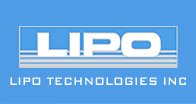"…if you have kids, you probably have a scratch and sniff book around the house. And even if the book is 20 years old, it still works! The reason the stickers last so long is because of the microencapsulation technology used to create them. The basic idea behind scratch-and-sniff is to take the aroma-generating chemical and encapsulate it in gelatin or plastic spheres that are incredibly small -- on the order of a few microns in diameter. When you scratch the sticker, you rupture some of these spheres and release the smell. The smell is essentially held in millions of tiny bottles, and you break a few of the bottles every time you scratch the sticker. The tiny bottles preserve the fragrance for years."
Quoted from: http://www.ask.com "How Stuff Works"
Microencapsulation was invented in the 1950's by National Cash Register in Dayton, Ohio for the carbonless copy paper industry. From there the uses for the technology seemed almost endless and a wide variety of industries began to utilize different shell materials, internal phases and techniques to manufacture microcapsules for their specific end use. Lipo Technologies Inc. was incorporated in 1990 and we are a privately held company. Before we became Lipo Technologies we were Djinni Industries, whose claim to fame was encapsulated liquid crystal for mood rings and thermometers. Once we became Lipo we expanded our technology platforms and our customer base. At LTI we consider our true advantage our versatility. We think of ourselves as a solution provider and we come to you with our "toolbox" to help you solve your toughest production dilemmas. Please visit our website to get a brief overview of just some of the technologies we utilize and contact us to discuss your project in further detail.
Thursday, March 12, 2009
LipoCapsule Gelatin - Product
Produced via a coacervation technique, these microcapsules are distinguished by a clear non-pigmented shell surrounding a single droplet of oil or particle of a hydrophobic nature with or without a color. These capsules range in size from 10-3000 microns avg. depending on the end application. The gelatin capsules can be used for a wide variety of applications including cosmetics, fragrances, flame retardants, pet care, household, tire care, and many more. They can add functionality as well as aesthetic value.
Visit this page of our web site for additional information: http://www.lipotechnologies.com/lipocapsule.htm
Visit this page of our web site for additional information: http://www.lipotechnologies.com/lipocapsule.htm
Subscribe to:
Posts (Atom)

